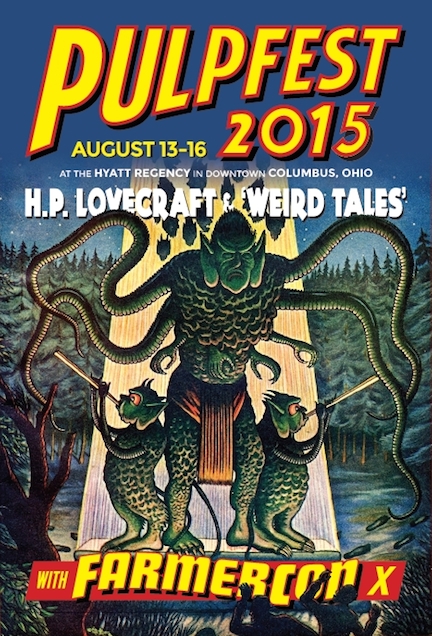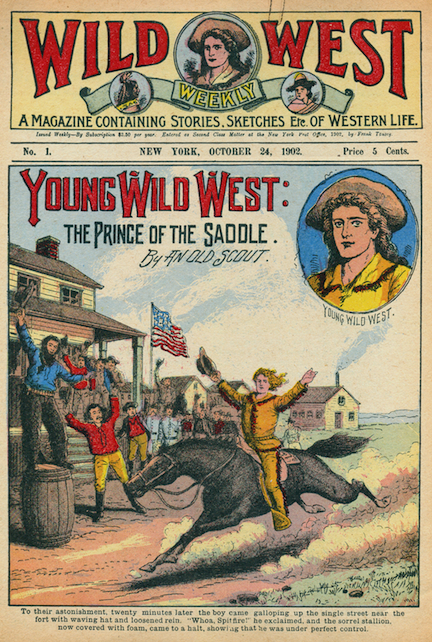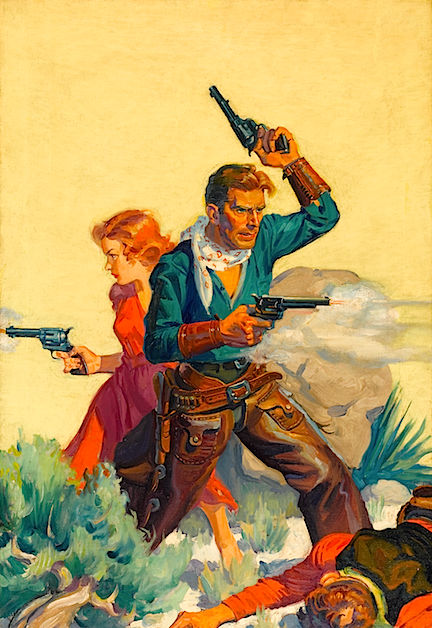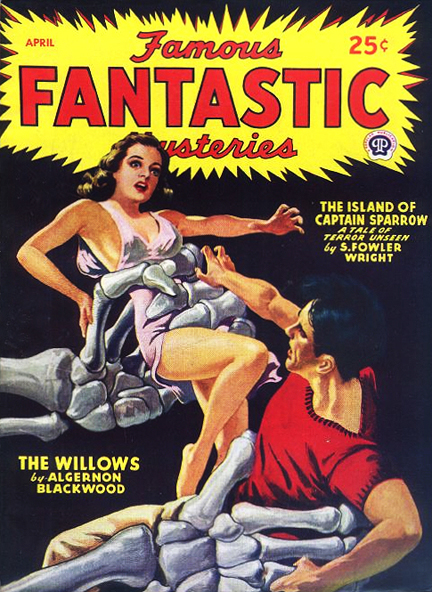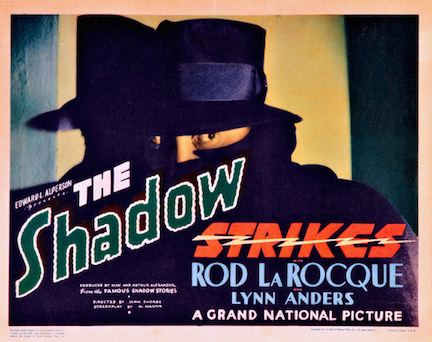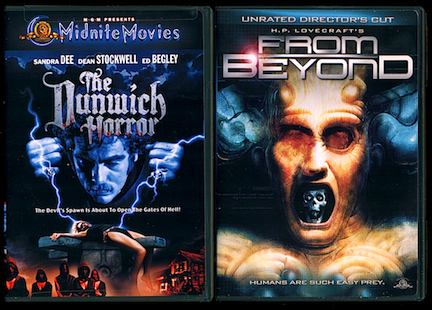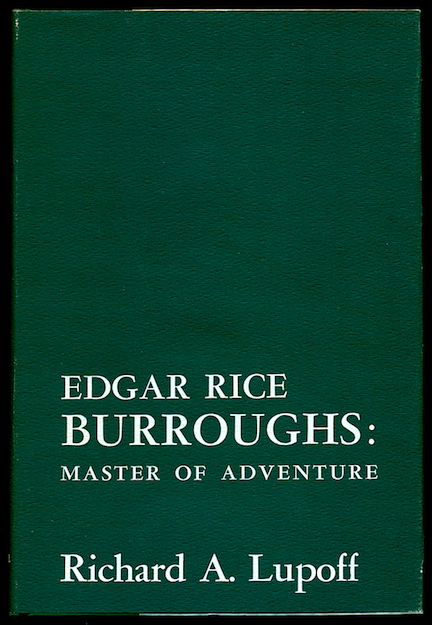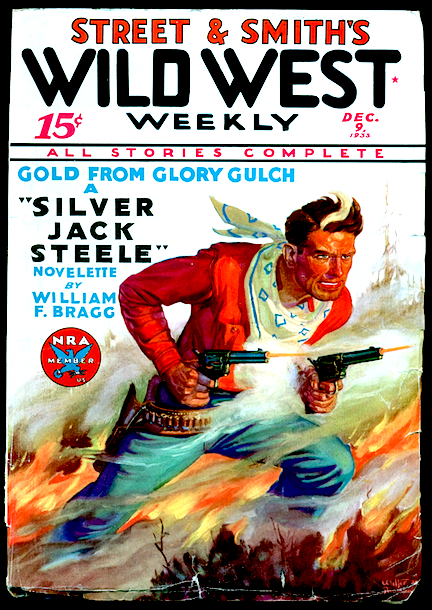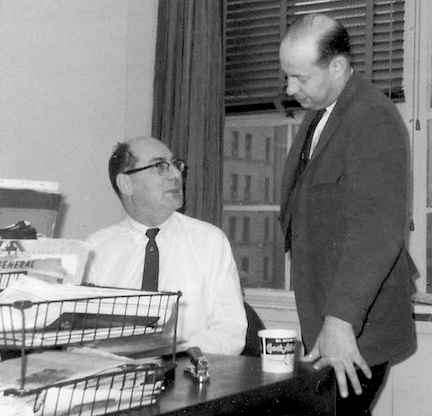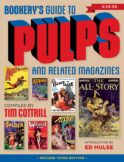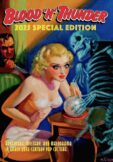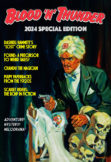EDitorial Comments
PulpFest Begins This Week — At Last!
The long wait is over; the big event is about to begin. This Thursday I head to Columbus, Ohio, with three good friends in tow, to attend the 7th annual PulpFest, where the country’s devotees and collectors of pulp fiction will congregate to buy, sell, talk, and trade vintage rough-paper magazines — along with books, digests, paperbacks, and related items. I had planned to post something on the convention today but I’m turning this space over to guest blogger Walker Martin, who actually penned the piece below for Steve Lewis’ most excellent blog Mystery*File. Some readers of this blog follow Steve’s as well, but I know there are many who will be unfamiliar with it. So Walker’s enthusiastic endorsement of the convention will be new to them.
In the interest of full disclosure I will point out that the aforementioned Mr. Martin is one of the friends who accompanies me every year on the drives to Chicago (for the Windy Ciy con) and Columbus. And now, without further adieu, here’s Walker. . . .
The last couple days I’ve been thinking about PulpFest which will be held August 13 through 16, 2015, in Columbus, Ohio. That’s this Thursday coming up! I’ve been deluged by logical and sane looking collectors and non-collectors all asking me the same question: Why bother attending PulpFest? They have shown up at my house; they have called me on the telephone; they have sent me e-mails.
Enough is enough! Here’s a list of excuses for not attending that I hear all the time, followed with my rebuttal for each one.
1 — I have no money! Sorry but I’ve attended many a Pulpcon in the 1970s, ’80s, and ’90s and I went with very little money. Are there no credit cards? Are there no credit unions? Are there no non-collecting spouses to borrow money from? Even when I had the money, I often blew it before the convention by visiting local bookstores like Bonnett’s and Dragon’s Lair in Dayton, Ohio. If not in the bookstores, then in the hotel rooms of friends who let me see what they were bringing to sell. I learned to go without much cash but I brought a few boxes of pulps to trade and sell at my table.
2 — I’m in poor health and too sick to attend. Sorry again! I had a friend who had a terminal illness and came to Pulpcon anyway. Another friend actually collapsed at the convention and died soon after. I myself once threw my back out three days before the show and my doctor and chiropractor both told me to forget making the long drive to the convention. I felt like I was crippled for life but managed to squeeze into the car and drive out even though I had to stop numerous times near hotels because I thought I was not going to make it. I could then rent a room and lay there for a couple weeks until I could stand. It took me 16 hours instead of the usual nine hours but I made it. I spent the entire convention standing because sitting down caused back spasms.
3 — I have no space [or] I live in a small apartment. Collectors always make space for the things they love! When I first met uber-collector Bob Lesser in the 1970s he had an apartment full of Disney toys. This was NYC and the apartment was tiny, with a path from the front door to the bed and another path to the bathroom. Otherwise, every inch was toys, robots, paintings. He’s still there, and the place is just as cramped. I once ran out of space and hunted for over a year until I found a bigger house. I went to dozens of open houses and looked at hundreds of houses. I finally found a big house. Unfortunately I soon filled it up with books and now I need a bigger place! The old story . . . .
4 — My wife is a non-collector and forbids me to go. Tell me about it! I’ve been married over 40 years and I’ve heard it all. I still go and I still collect. Lester Mayer told me at the 1990 Pulpcon at Wayne, New Jersey that his wife thought he was a business meeting, and that if she knew he was at the convention she might burn his pulps. Collectors have to become masters of deception and great liars to defeat the non-collector. Many a time I’ve lied and many a time I’ve smuggled books into the house in the dead of night while “she who must be obeyed” slept the innocent sleep of the non-collector. Non-collectors exist to be ignored. . . .
5 — I can’t get off from work. Sorry, but not a valid reason. My employers always knew I was a rabid book collector who always without exception took off a week during Pulpcon in the summer. I made sure that my vacation request was in as early as I knew the convention dates. Once they sorrowfully told me I couldn’t go because of some work bullshit. I went anyway and left it to them to ignore my absence without leave or put up with one pissed-off book collector. I realize the employment situation is different nowadays but which is more important, your job or your collection, your marriage or your collection? Right, your collection.
6 — Who cares about the convention? I can buy my pulps off eBay, etc. In the 1920s and 1930s the dime-novel collectors existed. But they didn’t have a convention and the hobby died off. As did the hobbyists. Now I know of only a few in existence and dime novels are just about worthless. If I had a tableful of dime novels priced at a buck apiece, most collectors would scurry by in disgust. We have to support the two big pulp conventions: Windy City in Chicago and Pulpfest in Columbus. If we don’t, then one day we will wake up and the pulps might be dead. These shows garner a lot of attention and people keep talking about the pulps because of the efforts of Mike Chomko, Jack Cullers, Barry Traylor, Doug Ellis, John Gunnison, and others.
7 — And finally, the best reason for attending! Pulp conventions are a hell of a lot of fun. Not only do you get to roam around a gigantic dealer’s room full of books and pulps but you get to meet and talk to some of the greatest collectors and dealers. These will lead to future deals and contacts. Plus you can eat and drink with these guys! (Though I seem to be one of last of the drinkers.) And the panels! All day and all night we’ll be discussing pulps and books. What’s cooler than that?
8 — Walker, it’s too late! Like hell. There are hotels with rooms available nearby. What’s the most important thing in a serious collector’s life? His collection, without a doubt. We work, we slave, we march on to the bitter end where we will eat dirt in the boneyard. We live lives of quiet desperation and worry about the afterlife. Go to Pulpfest and collect some books and pulps! You only live once. . . .
Edgar Wallace’s JACK O’ JUDGMENT
The following essay has been adapted from my introduction to Jack o’ Judgment & Captains of Souls: Two Novels by Edgar Wallace, published last year by Stark House in a handsome trade-paperback edition. I’m posting it now because I wanted to update the blog and, frankly, have no time to write something substantive as I’m hard at work on the Murania Press publications that will debut at PulpFest.
The recent boom in small-press reprints of works by obscure crime writers and pulp fictioneers has revived interest in a good many storytellers previously forgotten. And yet, strangely, the movement to date has largely ignored Edgar Wallace, an astonishingly prolific British author who was in his time emulated, and imitated, by a host of thriller writers on both sides of the Atlantic. Very little of Wallace’s prodigious output remains in print, despite the fact that for many years one of every four books sold in Britain bore his name on its cover.
Richard Horatio Edgar Wallace was born in London on April 1, 1875, the illegitimate son of British stage performers who gave him up for adoption. Taken into the family of “fish porter” George Freeman, the boy shared a cramped home with ten siblings. This modest upbringing led young master Richard to seek employment at an early age, and only upon applying for a job that required the presentation of a birth certificate did he learn the truth about his parentage.
Leaving school at the age of 12, he toiled in various positions until joining the British army at 18. Upon being discharged Wallace—by now using the surname of his birth father—wangled a job as South African correspondent for the Reuters international news agency. The young journalist learned a great deal about Africa and its people while honing his ability as a writer and breaking several important stories. He returned to England an ace reporter for the London Daily Mail, mingling effortlessly with members of upper and lower classes alike. Moreover, he developed an uncanny knack for ferreting out news under extraordinary conditions, often relying on shady characters for tips. This experience stood him in good stead when he turned to writing fiction.
In 1905 Wallace self-published his first novel, The Four Just Men, under the auspices of Tallis Press. As an inducement to potential buyers unfamiliar with his byline, he offered 500 pounds in prize money to readers who solved the mystery surrounding a supporting character’s death at the hands of the Just Men. For this purpose the book included a form that could be filled out, detached, and mailed to the Tallis Press office. The first prize was 250 pounds; the others were lesser amounts. In preparing promotional copy for the contest Wallace failed to restrict the number of entrants, and while the novel was a huge best-seller he actually lost money because a larger-than-anticipated number of applicants correctly guessed the murder method. (He actually received financial aid from the Mail, which feared his poorly conceived scheme would reflect badly on the paper.) The newly minted author paid dearly for underestimating his readers but established himself as a thriller writer to watch. In the long run his contest payout was money well invested.
Much of Wallace’s early fiction drew upon his experience in Africa. The exploits of his first series character, Sanders of the River, reflected typical Victorian-era attitudes regarding British colonialism. Commissioner Sanders maintained order among squabbling native tribes using considerable ingenuity and relying on his vast knowledge of human nature. Most readers today find Sanders condescendingly paternalistic at best and arrogantly racist at worst, but in the 20th century’s first two decades Wallace’s tales in this series were well received and collected in book form on both sides of the Atlantic.
During the First World War, Edgar Wallace wrote about such heroic AEF aviators as Tam o’ the Scoots and the Companions of the Ace-High, whose careers were documented in Everybody’s Magazine and The Popular Magazine respectively. After the War he increasingly turned to the production of crime thrillers, especially when the firm of Street & Smith purchased American rights to much of his output for one of its most successful pulps, Detective Story Magazine. By this time his yarns were appearing regularly in such British periodicals as The Strand, The Thriller, The Grand Magazine, and The Detective Magazine.
Wallace cleverly rebuffed requests for exclusivity from American pulp-magazine publishers and placed his yarns with multiple houses; during the Twenties his works were just as likely to be seen in Doubleday’s Short Stories and Munsey’s Flynn’s and Detective Fiction Weekly as in Detective Story. As his fame grew in the United States, he frequently sold to the prestigious slicks, including Collier’s, Cosmopolitan, and The Saturday Evening Post.
Wallace enjoyed particular success in the pages of Detective Story, which serialized more than two dozen of his novels and published multi-entry series of short stories featuring his most popular recurring characters, The Ringer and The Three Just Men. One of his earliest contributions to the venerable Street & Smith pulp was “Jack O’Judgment,” which ran in six weekly installments from March 9 through April 13, 1920. It was published in hard covers the next month by the British house Ward Lock and then again the following year by the Boston-headquartered firm of Small, Maynard & Company.
“Jack O’ Judgment” is a key title in Wallace’s oeuvre. A pulpy thriller through and through, it marks the first major work in which he employed a “mystery man” protagonist whose motivation remained unknown until the closing chapters. Garbed in slouch hat and cloak, his face masked, Jack mocks his adversaries with a shrill laugh, talks of himself in the third person, and leaves a jack of clubs as his calling card. He appears seemingly out of thin air and vanishes without a trace. For reasons known only to himself, this wraith-like figure has sworn vengeance on “Colonel” Dan Boundary, head of a blackmail ring responsible for the deaths—both suicides and murders—of numerous people whose darkest secrets have been used against them. The Colonel is also sought by Scotland Yard, represented in this story by young inspector Stafford King and distinguished commissioner Stanley Belcom. The inevitable love interest is furnished by Maisie White, stage actress and daughter of Boundary’s former partner.
“Jack O’ Judgment” crackles with suspense and melodrama while exhibiting its author’s strengths and weaknesses as a storyteller. Wallace often wrote (or dictated) his thrillers at white heat, and while his speedy composition imparted a breezy quality to these compulsively readable tales, it frequently produced embarrassing lapses in plot and characterization. The early chapters of “Jack,” for example, make a great to-do about incriminating documents collected and hidden by Boundary’s clerk, Olaf Hanson, who is working undercover for the police and seems destined to play an important role in the proceedings. Wallace, however, summarily dispatches Hanson in the novel’s first Detective Story installment and the vitally important papers are never again mentioned, even though the principal characters all know of their existence. Other inconsistencies abound but can’t be reported here lest I spoil your enjoyment of the story. Odds are they escaped the notice of Detective Story readers who digested the yarn in weekly portions of ten thousand words.
But therein lies the point: Edgar Wallace thrillers usually move at such a breathless pace, and are crowded with so many exciting incidents and colorful characters, that errors of continuity often go undetected. It doesn’t matter that the characters are two dimensional or that certain narrative devices are reused ad infinitum. The author is a master at drawing readers into a world of his own creation. Wallace’s London is especially magical; its familiar landmarks are carefully and realistically described—the journalist’s penchant for conveying shrewd observations in terse sentences is obvious here—but his imagination conjures up a sort of phantom city in which seedy and none-too-bright underworld denizens rub shoulders with grotesquely disguised criminal masterminds and independently wealthy Scotland Yard inspectors.
Now THAT’S a Review!
Don’t believe any author who claims not to pay attention to reviews. He might discount the good ones and ignore the bad ones, but believe me, he pays attention. I’ve been extremely fortunate to receive uniformly favorable notices for my books, most recently the award-nominated Distressed Damsels and Masked Marauders, and previously Filming the West of Zane Grey and The Films of Betty Grable. But the reviews for The Blood ‘n’ Thunder Guide to Pulp Fiction have been uncommonly laudatory, particularly on Amazon, where the book has received nothing but five-star ratings.
Nonetheless, I was bowled over the other day to come across a write-up on the Guide posted by one S. Craig Zahler. Every author appreciates well-informed criticism and thus craves the approbation of fellow travelers and professional scriveners. So to me it’s especially rewarding to be praised effusively by someone as accomplished as Mr. Zahler. He’s written four novels to date, including the noir Westerns Wraith of the Broken Land and A Congregation of Jackals (the latter a nominee for the Western Writers of America’s Spur award), and the gritty crime thriller Mean Business on North Ganson Street. Additionally, he’s scripted an indie horror film, Asylum Blackout (2011), and recently made his directorial debut with Bone Tomahawk (2015), which stars Kurt Russell, Patrick Wilson, and Matthew Fox. The latter film, to which he also contributed the original screenplay, is currently in post-production. Westerns, crime thrillers, horror movies—sounds like a born pulp fan to me. And indeed, he is. So I was more than delighted to stumble over his review of the BnT Guide—which, at the risk of seeming immodest and self-serving, I reprint below:
Although online searches and stumbling through websites can unearth a wealth of information on many subjects, I like to reward individuals who go through the extra effort of writing, laying out, and printing a book on whichever subject I’m interested in researching. I’ve purchased guides on progressive rock albums, television horror movies from the seventies, direct-to-video cult films, Western television shows of the Fifties and Sixties, American martial arts films, country music, anime, heavy metal, soul music, and other niche subjects. Not until I read The Blood ‘n’ Thunder Guide to Pulp Fiction had I read a guide that intelligently and tastefully delivered the promise of its premise.
As a longtime fan of H.P. Lovecraft, Clark Ashton Smith, R.E. Howard, Max Brand, Edgar Rice Burroughs, Isaac Asimov, and David Goodis, I had hoped that a guide on pulp magazines would reveal to me some lesser known, but comparably skilled authors from the pulp milieu. This information lies in great abundance in Ed Hulse’s book. Although I have not read this tome cover to cover, I have read the major part of the book, and many of the chapters multiple times. The wit and good taste that the author shows when discussing the subject of pulp fiction led to my discovery of scores of forgotten works that deserve rediscovery.
This valuable guide is neither the slobbering work of rabid fan who likes everything, nor the work of a snobby elitist who feels superior to the material about which he writes, but a collection of smart, zesty essays—arranged by genre—of somebody who appreciates the varied aims of various pulp magazines. The rich and meticulously crafted tales of the stately Adventure, the apocalyptic visions of Operator #5, the hyperventilating bloody mania of The Spider, the aggressive modes of detection employed by those fellas in Dime Detective, the depravity of the Red Circle shudder pulps, the grandeur of Astounding Stories, the eldritch charms of Weird Tales, and the merits of many other genres and subgenres are critically and fondly discussed by the wellspring of pulp knowledge that is Ed Hulse. Wanna know which pulps to read as the best of their genre? Follow the advice of Mr. Hulse. Wanna know which exact issues of each magazine are the exemplars? Follow the advice of Mr. Hulse. Wanna know about the evolution of a particular magazine or genre? Get this book.
Heeding the thoughtful words of this sage of the yellow page, my library and life have been bettered and my list of favorite authors has dramatically been altered. Thank you, Mr. Hulse for opening the pulpwood door behind which stand such incredible talents as Norvell W. Page, Bruno Fischer, Arthur O. Friel, L. Patrick Greene, Harold Lamb, Frederick C. Davis, D.L. Champion, and many others.
Now that’s what I call a review!
Full disclosure: I’ve met Craig Zahler, who has now attended several meetings of the Gotham Pulp Collectors Club and conveyed to me in person his appreciation for the Guide. But no, I didn’t pay him to write this glowing review (just in case some of you wise guys were about to ask), and didn’t know he had written it until I saw it on line.
If you consider yourself a serious fan of vintage pulp fiction, there’s still time for you to take Mr. Zahler’s advice and “Get this book.” How, you ask? It’s a cinch: just click here. Better yet, you can get the Guide along with a one-year subscription to Blood ‘n’ Thunder, with a 25-percent discount for both, here.
Dime Novels and Nickel Weeklies
What do Nick Carter, Buffalo Bill, Deadwood Dick, Frank James, Seth Jones, Bob Brooks, Jack Wright, the Liberty Boys, Young Wild West, Wild Bill Hickok, and Tom Edison Junior have in common?
Two things—at least. First, they were all heroes of dime novels and nickel weeklies published during the late 19th and early 20th centuries. Second, I’ve now got at least one sample of each available for purchase here in the site’s Collectibles section.
These desirable examples of early blood-and-thunder fiction are hard to find in their original editions due largely to the fact that they were thin pamphlets—16 to 32 pages crammed with microscopic text on two- or three-column pages—on cheap newsprint paper. Probably most were shredded upon their initial readings, especially since so many young boys had to stuff them into pockets or under mattresses to keep from getting caught with this forbidden fruit, which resulted in stern tongue-lashings at best and a whipping behind the woodshed at worst.
So fondly remembered were these lurid little proto-pulps that their original consumers, as successful adult men decades later, paid as much as several dollars each for surviving specimens. And that was during the depths of the Depression, when a dollar bought a steak dinner with all the trimmings.
During the Thirties, thanks to “Reckless Ralph” Cummings and other hobbyists, the dime novel became a legitimate item of interest. A core of collectors calling themselves the Happy Hours Brotherhood coalesced around a fanzine called Dime Novel Round-Up, originally published by Cummings (and still being issued today). Rare issues were frequently offered for sale in the zine’s pages.
In 1945 Cummings and Brooklyn-based fan Charles Bragin, recognizing that demand outstripped supply, began offering high-quality facsimile reprints of particularly desirable issues. Like the originals, they were printed on newsprint and untrimmed, with perforated edges along the top edge. A few, including the first issue of Frank Tousey’s popular Wild West Weekly (which is one I’ve listed for sale), had four-color covers, but for the most part Bragin reprints sported black-and-white covers.
Over a period of several years Bragin published dozens of dime-novel facsimiles. Now even those are collectibles, the earliest ones being seven decades old.
Some years ago I came across a small cache of Bragin reprints, most of them unread copies with the perforated top edges unopened and side edges folded but untrimmed. I’ve culled nearly 20 duplicates and am offering them here.
You occasionally find Bragin reprints for sale on eBay, and more than one ignorant or unscrupulous dealer has tried palming them off as original dime-novels. Actually, given the yellowing newsprint and the high quality of reproduction, it wasn’t that hard to do. Believe it or not, some sellers have asked $20, $30 and even $50 for these things. I’m asking $10 each (postage included) for my dupes, with the exception of the color-covered Wild West Weekly #1, which I’ve priced at a fat $12.50. That’s as much as these things should go for.
If you’re a fan of pulp fiction—and I assume most readers of this blog are—you owe it to yourself to try some dime novels and nickel weeklies. Yeah, you’ll find lots of purple prose and stilted dialogue, but you’ll be surprised how many plot devices, character types, and storytelling techniques were grandfathered into the pulps, whose early writers were, after all, mostly enlisted from the ranks of dime-novel scribes. Take a good look at the covers accompanying my listings; clicking on the small image will bring up a larger one.
R.I.P. Steve Kennedy, 1945-2015
I was just getting ready to enjoy the traditional Independence Day repast of hamburgers, hot dogs and potato salad when I made the mistake of logging onto Facebook, where I learned that my friend and fellow pulp enthusiast Steve Kennedy has just passed away at the age of 70. Don’t know any of the details yet, but Steve never fully recovered from a stroke he had a couple years back, and he seemed to have trouble controlling his blood pressure, so I wouldn’t be surprised to learn that a second stroke laid him low.
Steve was an art dealer by trade and developed a fascination with pulps after acquiring numerous cover paintings—mostly Westerns—by such artists as Walter Baumhofer, Robert Lillis, and Rafael de Soto. Although he resold the majority of them, he began seeking out other examples. Occasionally they wound up hanging on his walls, but more often than not reversals of fortune forced him to dispose of them to other collectors. I intend no slander when I say that Steve was one of the world’s worst businessmen; he could find a way to lose money on a Picasso even if he’d plucked it out of a garbage can with nobody looking. Unfortunately, some pulp-art collectors (including one well-known member of the clan whose name I’ll refrain from mentioning) rarely missed an opportunity to profit from his lack of business acumen.
I first met Steve by bumping into him—literally—at a table in the Pulpcon dealer room 15 or 16 years ago. We were both looking through boxes of Western pulps and he explained that he was keen to find an issue of Pete Rice to which he had just obtained the Baumhofer-painted cover. At it happened, I’d just spotted that particular issue and directed him to it. We struck up a conversation that blossomed into friendship. I can’t say we were bosom buddies, but our paths crossed at least a half-dozen times per year.
Though a New Yorker, Steve at pulp conventions hung out with a group of predominantly New Jersey-based collectors that included Walker Martin, Digges La Touche, Scott Hartshorn, Nick Certo (another New Yorker), and the late Harry Noble. When I met him I’d not yet become part of that group, although I joined it a few years later, shortly after launching Blood ‘n’ Thunder in 2002.
Steve was one of the most laid-back, easy-going individuals I ever knew, although I later discovered that he was often consumed with anxiety owing to his financial woes, which were constant and often acute. He had a ready smile and was always eager to please, which made him good company. To be perfectly honest, I was frequently exasperated by his seeming inability to grasp simple concepts, and his absent-mindedness was legendary. (Once, upon flipping through a box marked “Dollar Pulps,” he actually asked the dealer: “How much are your dollar pulps?”) But there wasn’t a mean bone in Steve’s body and it was impossible to dislike or even stay angry with him.
During his many years in the pulp hobby Steve Kennedy unearthed, bought, and/or sold some of the best surviving examples of cover art and interior illustration. Being primarily a collector of vintage magazines I never purchased paintings from him, although a couple years ago I put dibs on one of his recent acquisitions, a 1934 Dime Western cover by Baumhofer. He had no intention of letting it go but promised to sell it to me if or when he needed money. Unfortunately, he needed money when I had none to spare, so he sold it to Walker, in whose family room it now hangs. In his characteristically absent-minded way, Steve asked the painting’s new owner to refrain from telling me about the sale—forgetting that hardly a month passes between my visits to the Martin home.
You’ll be missed, Steve. And when Walker, Digges, Nick, and I are making the drive to Columbus next month for PulpFest, you can bet we’ll be reminiscing about the times you drove along with us.
BLOOD ‘N’ THUNDER #45 Preview
The Summer 2015 issue (#45) of Blood ‘n’ Thunder will debut in August at this year’s PulpFest, and here’s what you can expect to find inside:
The cover story/feature article takes a detailed look at the classic Munsey and Popular Publications pulp Famous Fantastic Mysteries. Frankly, I was stuck for a lead article, but after several people commented on the FFM blog entry I posted a few weeks ago, I decided to expand it into one of the comprehensive surveys for which BnT is well known.
Did you know that, of all the years in which motion pictures have been made, one far outstrips the others in the number of blood-and-thunder films released? It’s true and easily demonstrable, as you’ll see in “32 from ’32: A Banner Year for Fantastic Cinema.” The piece covers many familiar titles, but I’m betting that most of you will be introduced to must-see movies you never heard of. And all 32 films mentioned — even the scarcest, almost forgotten titles — are available on DVD. We’ll tell you where and from whom.
Rick Lai is back with “The Secret Son of Bran Mak Morn,” an ingenious bit of Wold Newton-ish scholarship that draws a heretofore undetected connection between Robert E. Howard’s barbarian protagonist and other figures of fantastic literature.
Our “Tricks of the Trade” department reprints a 1940 Writer’s Digest article by veteran pulpateer James W. Egan on the feasibility of pulps priced at five cents. “Cliffhanger Classics” examines the 1937 Universal serial Radio Patrol, based on a popular King Features comic strip of the Thirties. In this issue’s installment of “Adventurous Airwaves” Martin Grams Jr. tells the story behind the all-but-forgotten radio dramatization of King Kong. There are several other department installments as well.
Finally, this issue’s “Blood ‘n’ Thunder Reprint” is a 1934 adventure yarn by future SF editor Sam Merwin. “The Hornet Strikes” seems to prefigure a certain crime-busting hero of Old Time Radio fame, and we think you know who we mean.
All told, we think it’ll be another bang-up issue of BnT. If you’re not already a subscriber, why not go here and sign up now?
7 Weeks to the 7th PulpFest
Seven weeks from today, the pulp-fan cognoscenti will descend upon Columbus, Ohio, for the seventh annual PulpFest. Launched in 2009 to continue the tradition of a summer show for readers, scholars and collectors of vintage rough-paper magazines and related items, PulpFest quickly made its mark on the hobby with a concentration on informative and entertaining programming, and this year’s convention should live up to the high standard set by its predecessors.
Two anniversaries will dominate PulpFest programming in 2015: the 125th birthday of Weird Tales favorite H. P. Lovecraft and the 115th birthday of Leo Margulies, editorial director of the “Thrilling Group” pulp line. A blue-ribbon of pop-culture scholars (including yours truly) will participate in panel discussions and solo presentations covering some aspect of the Lovecraft-Weird Tales and Margulies-Thrilling Group connections.
As always, separate programming tracks will be devoted to Farmercon, the annual gathering of Philip José Farmer devotees, and the various New Pulp luminaries who also will be exhibiting their wares in the spacious dealer’s room.
Speaking of dealers, you’ll find plenty of them at PulpFest. Whether you collect pulps, pulp reprints, vintage paperbacks and hardcovers, fanzines, comics, or other examples of reading matter printed on paper, there’ll be lots of desirable items available no matter how limited your budget. There’s always a surfeit of action in a PulpFest dealer room and very few attendees manage to canvass the entire space during the convention’s three days — but it’s so much fun to try.
For everything you need to know about PulpFest — dates, registration prices, hotel information, programming schedule, dealer list — just go to the con’s website here. You’ll see the Murania Press tables as soon as you walk through the front door, so don’t forget to stop by and say hi!
This Month’s Collectibles Update
I’ve just added a slew of new items to the Collectibles For Sale section: pulps, pulp-story reprints, and pulp-related DVDs and reference works. There’s good stuff here for fans and collectors of Edgar Rice Burroughs, Robert E. Howard, H. P. Lovecraft, Walter B. Gibson, and Jack Williamson, among others. And I’ve put up the last uncirculated copy of the now out-of-print Blood ‘n’ Thunder Guide to Collecting Pulps, the 2007 predecessor of the Blood ‘n’ Thunder Guide to Pulp Fiction.
As always, the list prices include shipping to buyers located in the United States. International buyers will have to kick in a little extra for postage depending upon the item’s weight and ultimate destination. If you’re among the latter group and wish to purchase the item rather than risk losing it by inquiring first about postage charges, by all means do so — but be prepared to pay the additional cost with a second Paypal transaction.
Below are some of the newly listed items for sale.
Centennial Alert: Julius Schwartz
I don’t have enough time to research and write a post that does justice to Julie Schwartz, but I can’t very well let his centennial slip by without at least some notice.
Yes, exactly one hundred years ago today Julius Schwartz was born in the Bronx, New York, to parents who had emigrated from Romania not long before. One of several thousand boys and young men who avidly consumed pulp fiction and discovered science fiction via Hugo Gernsback’s pioneering Amazing Stories, Julie collaborated with local friend Mort Weisinger and California-based correspondent Forrest J Ackerman on The Time Traveller, a pioneering “fanzine” that offered extensive coverage of the genre.
By virtue of his work on Time Traveller Julie connected with numerous SF fans who hoped to write the stuff professionally. Gregarious and confident, he set himself up as an agent and peddled their early yarns to the pulp editors based in New York (which was most of them). Beginning in 1934 he represented such young but talented authors as Robert Bloch, Ray Bradbury, and Alfred Bester. Julie sold the last works of horror scribe H. P. Lovecraft and SF writer Stanley G. Weinbaum, titans in their respective fields, who died too early.
After a stint as editor for Ned Pines’ Thrilling Group, Julie’s former partner Mort Weisinger joined DC Comics and began guiding the destiny of Superman and other four-color favorites. Schwartz, who had counted on Weisinger to buy his clients’ yarns for Thrilling Wonder Stories, not only kept in touch with Mort but followed him into the comic-book business in 1944. Initially Julie edited books in the All-American line managed separately by M. C. Gaines and Sheldon Mayer, but within a few years he became an integral part of the DC organization.
Schwartz spearheaded the mid-Fifties superhero revival that gave birth to the Silver Age of Comic Books; after successfully reviving The Flash in Showcase #4 (October 1956), he commissioned staff writers to dust off such other old favorites as Hawkman, The Atom, and Green Lantern. Then he assigned writer Gardner Fox and artist Mike Sekowsky to bring back the Justice Society of America, which was rechristened the Justice League as part of its renovation.
Julie’s biggest challenge was adding luster to the badly tarnished Batman comics, which by the early Sixties were drowning in puerility. He rode herd over scripter John Broome and artist Carmine Infantino, who jettisoned the Bob Kane look ably imitated by ghost artist Shelly Moldoff. The “New Look” Batman won back old fans and the Caped Crusader’s magazines, Batman and Detective Comics, enjoyed a meteoric rise in circulation after the character’s ABC TV show became a pop-culture sensation in 1966.
Julie spent another 15 years editing the Superman titles handled for many years by his old friend Mort Weisinger. He retired in 1986 and stayed as active as his emphysemia would permit, attending conventions of comic-book and science-fiction devotees. He never forgot his early days as an SF fan and gladly reminisced about them with anyone who showed even a slight interest. Julie collected some of his favorite anecdotes in a 2000 memoir, Man of Two Worlds: My Life in Science Fiction and Comics, co-written with Brian Thomsen.
I saw Julie at several conventions over the years and exchanged pleasantries with him a couple times. My early Blood ‘n’ Thunder cohort Mark Trost was trying to set up a formal interview for us when Schwartz began failing rapidly. Julie died at 88 shortly after being hospitalized for pneumonia. Right up to the time of his death he was still a much beloved figure in the dual fandoms to which he was so happy to have belonged.
Julie Schwartz, circa 2000.
Recent Posts
- Windy City Film Program: Day Two
- Windy City Pulp Show: Film Program
- Now Available: When Dracula Met Frankenstein
- Collectibles Section Update
- Mark Halegua (1953-2020), R.I.P.
Archives
- March 2023
- July 2021
- May 2021
- March 2020
- February 2020
- December 2019
- November 2019
- October 2019
- September 2019
- August 2019
- May 2019
- April 2019
- March 2019
- February 2019
- December 2018
- November 2018
- October 2018
- August 2018
- June 2018
- February 2018
- December 2017
- October 2017
- September 2017
- August 2017
- May 2017
- April 2017
- February 2017
- September 2016
- August 2016
- July 2016
- June 2016
- November 2015
- October 2015
- September 2015
- August 2015
- July 2015
- June 2015
- May 2015
- April 2015
- March 2015
- February 2015
- January 2015
- August 2014
- July 2014
- June 2014
- May 2014
- April 2014
- January 2014
- December 2013
- September 2013
- August 2013
- July 2013
- June 2013
- May 2013
- April 2013
- March 2013
- February 2013
- January 2013
- December 2012
- October 2012
- September 2012
- August 2012
- July 2012
- June 2012
- May 2012
Categories
- Birthday
- Blood 'n' Thunder
- Blood 'n' Thunder Presents
- Classic Pulp Reprints
- Collectibles For Sale
- Conventions
- Dime Novels
- Film Program
- Forgotten Classics of Pulp Fiction
- Movies
- Murania Press
- Pulp People
- PulpFest
- Pulps
- Reading Room
- Recently Read
- Serials
- Special Events
- Special Sale
- The Johnston McCulley Collection
- Uncategorized
- Upcoming Books
- Western Movies
- Windy City pulp convention
Dealers
Events
Publishers
Resources
- Coming Attractions
- Field Guide to Wild American Pulp Artists
- MagazineArt.Org
- Mystery*File
- ThePulp.Net

